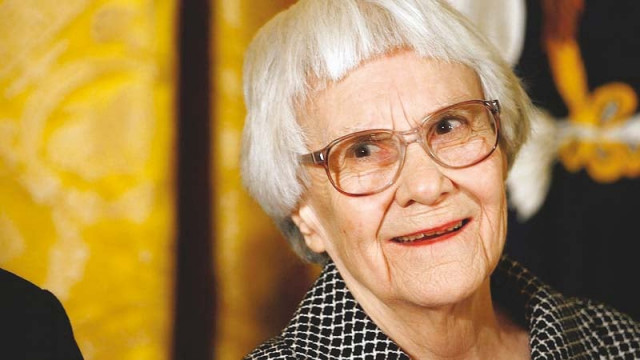Book review: Go Set a Watchman - An unsettling legacy
Harper Lee’s Go Set a Watchman — is compelling but divisive

Author Harper Lee.
Having said that, it really is difficult to read Watchman without constantly looking back to Mockingbird as a frame of reference. Harper Lee’s debut novel sold over 40 million copies and is integral to the western literary canon. It served up a microcosm of the effect felt in the separatist south when decisions made in US circuit courts were struck down by the Supreme Court during the Civil Rights Movement. It also had a tremendous impact on those for whom the book was a first foray to where reality and ideals meet, where centres of gravity shift and some summon an inner courage to stay and fight and others will fall into the pack and conform.
Most readers who grew up yearning to be in Jean Louise ‘Scout’ Finch’s place on the court balcony as Atticus deliberately yet gently led first the witnesses and then the jury through the trail of inconsistent evidence, right up to the scene of Tom Robinson’s innocence, will be shattered by Watchman. They will not see the characters evolve in the direction Harper Lee left them at in Mockingbird because those characters were written five years after she wrote Watchman. Instead, readers will see different verdicts to the rape case, varying details and plot changes which rob Mockingbird devotees of the imagined trajectory of characters.
Watchman was written in the mid-1950s and is based on the slightly hyperbolic, irrepressible narrative of 26-year-old Scout, who returns to Maycomb from New York armed with a resolve to maintain her independence. She soon realises the real battle was not with her heavily-corseted conservative Aunt Alexandra but with the civil rights movement as it pressed deeper on racial fracture lines. Expecting the comfort of knowing her hero, her father, is still the man she trusted and would still be the centre of her truth, Scout (and through her, the reader) is quick to realise that Atticus is actually a bigot. He becomes Atticus the segregationist who believes the African-Americans were too backward to be part of the government, to have equal right to vote.
It is hard to critique someone as acclaimed as Lee, but how can the reader not cringe when, unlike the voice in Mockingbird, the Scout in Watchman can come across as slightly hysterical? Scout’s conversations with other characters zigzag through her internal monologues, challenging the reader to piece together her thoughts. Instead of letting themes come through in the knitting together of her characters and their choices, Lee tends to use her characters’ voice as a direct vehicle.
Somewhere in the second half of Watchman, the themes of coming of age and a motherless child’s idolisation of her father explode into a breathless narrative, possibly best described in Lee’s editor’s words as more “a series of anecdotes than a fully conceived novel”. Yet, there is something compelling, something which resonates when Scout happens upon the realisation of self. Her coming of age is marked by the moment her childhood heroes fall from grace and villains rise for redemption. This is powerful enough to make Watchman resonate if you have struggled with the painful dissonance between your identity and those who were thought to have moulded the very shape you so proudly took on. Scout describes this process as “making secret trips to long ago, making no journey to the present”.
As we grasp at straws to understand the shift in characters in this second novel, Lee’s biographer provides some insight into the journey of Atticus. Charles Shield’s Mockingbird: A Portrait of Harper Lee was published in 2006, a year before Lee suffered a stroke which left her wheelchair-bound and with some impairment of sight and hearing. Shield reveals that Lee’s father Amasa Coleman Lee was possibly the blueprint for Atticus. Coleman went from staunch segregationist in the 1950s to preaching equal rights for all. Like Atticus from Mockingbird, Coleman Lee fought for justice for African-Americans in court and lost. Reconfiguring Atticus from Watchman to Mockingbird potentially mirrors Lee’s father’s journey from segregationist to someone who wanted fairer voting rights.

Therein lies the havoc of reading non-sequential books as complementary components of a whole. Lee’s editor saw the potential in Watchman and in the two or so years that the author worked on the draft, characters were fleshed out to become the ones we grew up aspiring to be when Mockingbird was launched in the 1960s. After a book which was so magnificently received, it seems unlikely that its first draft was meant to be read by anyone, let alone millions.
Pre-launch, global news outlets scrambled to find the secret behind Watchman’s unexpected release. Lee had retreated to Monroeville, Alabama after Mockingbird’s heady success. She still resides there and her lawyer Tonja B Carter, who is said to be behind the ‘discovery’ of the Watchman transcript, has been discredited as Lee gave several conflicting accounts of how and when the work came to be. Lee’s friends, according to The Wall Street Journal, question her ability to consent to publishing the book. Thus one question nags throughout and makes Go Set a Watchman a slightly uncomfortable, voyeuristic read — is this the book Lee never wanted as her legacy?
Published in The Express Tribune, Sunday Magazine, July 26th, 2015.

















COMMENTS
Comments are moderated and generally will be posted if they are on-topic and not abusive.
For more information, please see our Comments FAQ